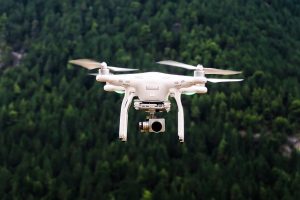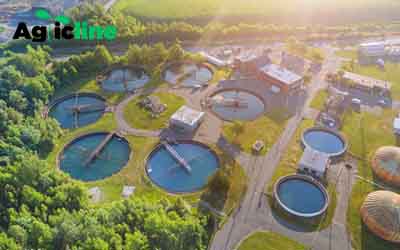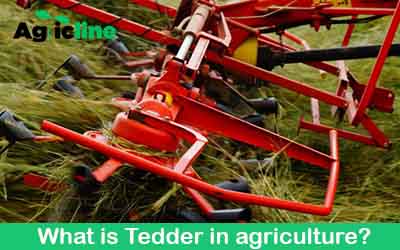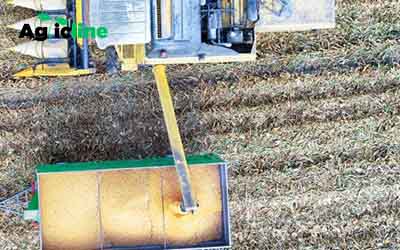Agriculture accounts for approximately 70% of global freshwater withdrawals, highlighting the sector’s deep reliance on this precious resource. Yet, as vital as water is to agriculture, it is not an infinite commodity.
As the world’s population continues to burgeon, putting increased demands on food production, the strain on our water resources intensifies.
The modern era presents us with new and escalating challenges. Climate change, an undeniable and looming specter, is altering weather patterns, leading to unpredictable and often less frequent rainfall in many regions.
This unpredictability translates to inconsistent water availability for crops, putting entire harvests and the economies they support at risk.
Add to this the specter of population growth. The world’s population is projected to reach nearly 10 billion by 2050, which means millions more mouths to feed. The resultant surge in food demand necessitates amplified agricultural outputs, and consequently, increased water usage.
Given these challenges, the pressing need for advanced water management techniques becomes evident. As we stand at the intersection of growing demands and dwindling resources, efficient water management is no longer a luxury—it’s an imperative.
Top water management technology in agriculture
- Precision Irrigation Systems
- Soil Moisture Sensors
- Drones and Satellite Imagery
- Artificial Intelligence (AI) and Machine Learning in Agriculture
- Smart Water Storage Solutions
Precision Irrigation Systems
Precision irrigation, as the name suggests, is all about precision and accuracy. It refers to the method of irrigating crops by delivering the exact amount of water needed at the right time and in the right place.
This is achieved through a combination of advanced sensors, control systems, and data analytics. Unlike traditional irrigation methods, which apply water uniformly across fields, precision irrigation tailors the water application based on specific crop needs, soil conditions, and other environmental factors.
Benefits of Precision Irrigation
- Reduced Water Usage
- Increased Crop Yields
- Cost Savings
- Environmental Benefits
- Flexibility
Soil Moisture Sensors
Soil moisture sensors are devices designed to measure the water content in the soil. They function based on various principles, such as electrical resistance, capacitance, or time domain reflectometry. Here’s a simple breakdown:
Electrical Resistance Sensors
These sensors have two probes that measure the resistance between them. Wet soil conducts electricity better than dry soil. Hence, the less resistance, the wetter the soil.
Capacitance Sensors
These function by measuring the dielectric permittivity of the soil, which changes as water content varies. A higher dielectric value indicates more moisture.
Time Domain Reflectometry (TDR)
TDR sensors emit electromagnetic waves into the soil, measuring the time taken for these waves to reflect back. The speed of reflection is influenced by the soil’s moisture content.
Advantages of Soil Moisture Sensors
- Real-Time Data
- Accurate Irrigation
- Conservation of Water Resources
- Economic Benefits
- Environmental Stewardship
Drones and Satellite Imagery
Both drones (Unmanned Aerial Vehicles or UAVs) and satellites offer a bird’s-eye view of agricultural lands, a perspective that was previously challenging and expensive to obtain.

Drones
Equipped with advanced cameras and sensors, drones can fly over fields at low altitudes, capturing high-resolution images and data. They can be deployed on-demand, making them perfect for frequent monitoring or when specific issues arise.
Satellite Imagery
Satellites orbiting the Earth capture vast expanses of land at once. With advancements in satellite technology, the images obtained are of high resolution, and when combined with other data (like weather patterns), they provide a comprehensive overview of large agricultural areas.
Advantages of Drones and Satellite Imagery
- Large-scale Monitoring
- Timely Interventions
- Data-driven Decisions
- Cost-Efficiency
- Historical Data Analysis
Artificial Intelligence (AI) and Machine Learning in Agriculture
Artificial Intelligence and Machine Learning are subsets of computer science that focus on the creation of algorithms that allow computers to perform tasks without being explicitly programmed for those tasks.
In the realm of agriculture, AI and ML are proving to be game-changers. By processing vast amounts of data at speeds incomprehensible to humans, AI models can offer insights, predictions, and automations that optimize water usage at an unprecedented scale.
Use Cases of AI and Machine Learning in Water Management
See below;
Predictive Analytics for Rainfall
AI models can analyze vast datasets, including historical weather patterns, ocean temperatures, atmospheric conditions, and more, to predict rainfall with improved accuracy.
This predictive capacity allows farmers to plan irrigation schedules more efficiently. For instance, if there’s a high likelihood of rain in the next 48 hours, a farmer can delay or skip an irrigation cycle, conserving water.
Crop-specific Watering Schedules
Every crop has unique water requirements, which can also vary based on its growth stage. AI can analyze data from multiple sources, such as soil sensors, climate data, and historical crop yields, to determine the optimal watering schedule for a specific crop in its specific growth phase.
Soil Health Analysis
AI can analyze data from soil sensors in real-time, determining factors like moisture levels, nutrient content, and pH balance. With this data, the system can recommend specific irrigation practices or even directly control automated irrigation systems to deliver the precise amount of water required.
Disease Prediction and Intervention
Certain plant diseases thrive in specific moisture conditions. By analyzing patterns in crop health and correlating them with watering practices, AI models can identify potential disease outbreaks before they become widespread.
Early detection allows for targeted interventions, which can include adjusting irrigation to create less hospitable conditions for the disease.
Water Resource Management
On a larger scale, AI can be used by governmental bodies or large agricultural enterprises to manage water reservoirs, dams, and supply chains. By predicting demand, rainfall, evaporation rates, and more, AI can aid in decisions about water storage, release, and distribution.
Integration with Other Technologies
AI models can work in conjunction with other technologies, like drones and satellite imagery. For instance, after a drone captures imagery of a field, AI can quickly analyze it, pinpointing areas that might be under-watered or over-watered.
Smart Water Storage Solutions
Water storage has always been a crucial component of agricultural practices, especially in regions with irregular rainfall patterns. However, with technological advancements, the methods of storing and distributing water have evolved beyond simple ponds or reservoirs.
Sensor-Integrated Storage Systems
Modern water storage tanks and reservoirs can be equipped with sensors that monitor water levels in real-time. This data can be transmitted to a central system, alerting farmers when levels are low or if there’s a sudden decrease, which might indicate a leak.
Automated Distribution Systems
Traditional irrigation systems often rely on manual controls or timers to release water. Smart storage solutions can be integrated with AI and predictive analytics to distribute water based on real-time needs, ensuring that fields or crops receive water precisely when they require it.
Evaporation Prevention
Technologies such as floating covers or “shade balls” can be used to reduce water evaporation from storage solutions. These innovations can be particularly useful in hot or arid regions.
Rainwater Harvesting
Modern systems can divert rainwater from rooftops or other catchment areas into storage tanks. These systems can be equipped with filtration systems to ensure water purity.
Groundwater Recharge Systems
In areas with depleting groundwater tables, technology-driven solutions can help divert excess rainwater or runoff to recharge wells, ensuring that underground aquifers are replenished.
Benefits of Smart Water Storage Solutions
- Reduced Wastage
- Efficient Use During Dry Periods
- Optimized Irrigation
- Environmental Conservation
- Cost Savings
The Environmental and Economic Impacts of Advanced Water Management
Efficient water management, enabled by modern technology, has profound effects on the environment. These impacts are multifaceted and go beyond just conserving water:
- Reduction in Over-Extraction: Advanced water management reduces the need to over-extract from groundwater sources and rivers. This ensures that aquifers remain replenished and river ecosystems are not disrupted by excessive water removal.
- Minimized Runoff and Soil Erosion: Properly managed irrigation systems reduce the chances of excessive water runoff, which can carry away valuable topsoil. Preserving this topsoil is essential for maintaining soil health and fertility.
- Decreased Water Pollution: Efficient water management means less water wastage and less runoff. This, in turn, results in fewer fertilizers and pesticides being washed away from fields into nearby water bodies, reducing water pollution and protecting aquatic life.
- Enhanced Biodiversity: When water is managed sustainably, wetlands and natural habitats remain intact, supporting diverse plant and animal species.
- Lowered Carbon Footprint: Advanced water management systems, especially those that utilize AI and automated machinery, can lead to fewer machine operations, resulting in reduced fuel consumption and carbon emissions.
Economic Implications of Advanced Water Management
- Cost Savings
- Increased Crop Yield
- Value-added Products
- Risk Mitigation
- Long-term Sustainability
- Job Creation
Challenges and Limitations of Advanced Water Management
While the potential benefits of modern water management technologies are vast, their implementation is not without challenges. It’s essential to understand these obstacles to devise strategies for broader adoption and optimization.
Integration Issues
As farms often use various systems and equipment, integrating new water management technologies without causing disruptions can be challenging.
Compatibility between different software platforms, sensor technologies, and machinery can pose technical hurdles.
Adoption Rates
The shift from traditional methods to technologically advanced systems can be overwhelming for some farmers, especially if they are not familiar with digital tools.
The pace of technological advancement can sometimes outstrip the ability of users to adapt, leading to underutilization.
Initial Investments
High upfront costs of some advanced water management systems can be a deterrent, especially for farmers who operate on slim margins.
There may also be ongoing costs related to maintenance, software updates, and potential hardware replacements.
Reliability and Maintenance
Like all tech-driven solutions, advanced water management systems can face malfunctions or breakdowns. In remote agricultural areas, getting timely repairs or replacements can be a challenge.
Regular maintenance is crucial to ensure these systems function optimally, which can demand additional time and resources.
Socio-economic Barriers
- Accessibility for Small-scale Farmers
- Training and Skill Development
- Awareness and Outreach
- Cultural and Traditional Hesitations
- Infrastructure Limitations
The Future of Water Management in Agriculture
The future of water management in agriculture is a fascinating amalgamation of technology, sustainability, and global collaboration.
As the importance of efficient water use grows due to environmental and socio-economic factors, we’re on the brink of witnessing groundbreaking changes in how we approach water in agriculture.
Upcoming Technologies and Innovations on the Horizon
- Nano-technology in Irrigation
- Internet of Things (IoT)
- Genetic Engineering
- Desalination Advancements
- Natural Water Management Systems
The Role of Collaboration
See below;
Governments
- Policy Framework
Governments can shape the future of water management by setting guidelines, providing incentives for sustainable practices, and funding research into new technologies.
- Infrastructure Development
Investing in robust infrastructure, including water storage, transport, and digital connectivity, can support the seamless integration of advanced water management solutions.
- Education and Training
Government initiatives can play a pivotal role in skilling farmers and agricultural workers to adopt and maximize new technologies.
Tech Companies
- Innovation
Technology companies will be at the forefront of designing and refining the tools that will define the future of water management.
- Accessibility
Ensuring that solutions are affordable and accessible, even to small-scale farmers, will be crucial. This may involve innovative pricing models, leasing options, or bundled services.
- Support and Maintenance
Providing robust after-sales support, including maintenance and updates, will ensure that farmers derive long-term value from their investments.
Farmers
- Ground-level Feedback
Farmers, being on the frontline, can offer invaluable insights into the practicalities and challenges of implementing new solutions. Their feedback can guide refinements and innovations.
- Adoption and Advocacy
As early adopters showcase the benefits of advanced water management, they can inspire and educate their peers, leading to broader adoption.
- Community Initiatives
Farmers can collaborate on community-based water management projects, such as shared reservoirs, cooperative purchasing of technology, or group training sessions.

Concluding remark on Water management technology in agriculture
Water has always been at the heart of agriculture. From the first civilizations that settled along river valleys to the vast modern farms feeding our planet, the story of agriculture is intrinsically linked with our quest to manage this life-giving resource effectively.
Today, as the world grapples with the dual challenges of a growing population and a changing climate, the importance of efficient water management in agriculture has never been clearer.
Technology stands out as a beacon in this journey. The advancements we’ve discussed from precision irrigation to AI-driven analytics offer not just incremental improvements but transformative potential.
They promise a future where farms use water judiciously, where crops thrive even in challenging conditions, and where every drop is used to its fullest potential. In essence, technology offers a vision of sustainable agriculture that aligns with the environmental and economic needs of the 21st century.
Recommendations
Best farming technology in India
What is the green revolution in agriculture?
Best precision agriculture technologies



